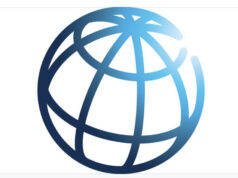The month of May has failed to bring any reprieve to drought-ravaged parts of Ethiopia, with the humanitarian situation threatening to unravel quickly if urgent action is not taken, Save the Children warned today.
Food supplies are already on the brink of depletion due to funding shortfalls, with need rapidly outstripping supply and donors’ funding failing to keep pace.
Across the country at least 7.8 million people – including 4 million children – have been hit by drought and are struggling to get enough food and water to feed themselves and their livestock. This number could now rise further, with authorities already carrying out an assessment of the situation.
Even as need grows, however, resources have been shrinking. In May, 700,000 people earmarked to receive international assistance did not get any food support due to a lack of funding. They face the same prospect again this month. From July, many more will lose out as funding dries up further.
“The drought in southern Ethiopia has been going from bad to worse and risks developing into a humanitarian catastrophe if action is not taken immediately,” said John Graham, Country Director for Save the Children in Ethiopia.
“The much-hoped for Spring Rains in the south failed in April and May which means we are likely to see six more months without rainfall. The rapid deterioration of the situation means that food supplies, which were expected to last until September, could run out this month.
“If emergency funding is not secured, millions of people could lose lifesaving food assistance and millions of children – who are most vulnerable and at much higher risk of malnutrition, stunting and disease – would be put in grave danger.”
Southern Ethiopia experiences the same rain system as Somalia, South Sudan and Kenya, which have all been hit by drought, but a different rain system to the north of the country which last year saw the worst drought in 50 years, leaving 18 million people in need. While northern parts of Ethiopia have recently been lashed with rain and seen flooding, the south has not seen proper rainfall since April 2016 and is now not expected to have any further rain until October.
“For months, attention has been focused on other drought affected countries in the Horn of Africa but the international community must wake up and recognize the scale of crisis in Ethiopia which already has more people who have been affected by drought than any other country,” said Graham.
“The early and effective response by the government and the international community has so far helped to save lives but the increase in need has exceeded all expectations and current resources are simply not enough to keep up with spiralling demand,” said Graham.
“Out of the $948 million the government has asked for, only around 50 percent has so far been funded. The international community has been generous so far but there is lot of dangerous talk internationally about cutting aid funding. If this happens during an emergency response it will endanger children’s lives – it will be like turning off a fireman’s hose half way through fighting a fire.”
Save the Children has already reached more than 300,000 people in Ethiopia with emergency assistance this year, including 140,000 children, in the Southern Nations and Nationalities People, Somali and Oromia regions that have been worst hit.
























